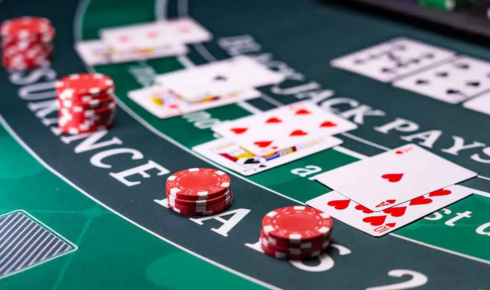
blackjack
Card games have fascinated people for centuries. From smoky saloons of the Wild West to modern casinos and even online platforms, two classics continue to stand tall—blackjack and poker. Both games test your skill, luck, and strategy, but each carries its own style, pace, and set of rules. If you’re just stepping into the world of card games, understanding the basics of these two favorites will help you feel confident at the table.
What Makes Blackjack Unique?
Blackjack, often called “21,” is one of the most straightforward and fast-paced casino games. The goal is simple: beat the dealer by having a hand value closest to 21 without going over. Number cards hold their face value, face cards (Jack, Queen, King) are worth 10, and Aces can count as either 1 or 11, depending on what benefits your hand.
The charm of blackjack lies in its balance of luck and decision-making. Unlike many other games, you’re not playing against other players but only against the dealer. This levels the playing field, making it accessible even for beginners.
A round typically starts with players placing their bets. The dealer then deals two cards to each player and two to themselves—one face up and one face down. From there, you decide whether to “hit” (take another card), “stand” (keep your hand), “double down” (double your bet with one extra card), or “split” if you’re dealt two of the same card.
Winning isn’t always about having 21—it’s about having a hand stronger than the dealer’s. If the dealer “busts” by going over 21, any remaining players win automatically. This blend of simplicity, speed, and strategy is what makes blackjack an all-time favorite in casinos worldwide.
Understanding Poker Rules
Poker, on the other hand, is less about speed and more about skill, patience, and reading people. It’s a social game where psychology and strategy play as much of a role as the cards in your hand. There are many variations, but Texas Hold’em is by far the most popular.
In a standard game, each player is dealt two private cards (known as hole cards), and five community cards are dealt face up in stages: the flop (three cards), the turn (one card), and the river (final card). Players build the best possible five-card hand using any combination of their hole cards and the shared cards.
Hand rankings are crucial in poker. A royal flush (10, Jack, Queen, King, Ace of the same suit) is unbeatable, while a simple pair can sometimes win if no one else holds something stronger. Betting rounds take place after each deal of the community cards, where players can call, raise, or fold based on their confidence in their hand—or their ability to bluff.
Understanding poker rule sets takes time, but that’s part of the game’s appeal. It’s not just about luck—it’s about strategy, timing, and reading your opponents’ behavior. A skilled player can win with a weak hand simply by convincing others to fold.
Which Game Should You Try First?
If you want something quick, beginner-friendly, and less intimidating, blackjack is a perfect start. Its rules can be learned in minutes, and the game’s rhythm is easy to follow. For those who enjoy deeper strategy, social interaction, and mental battles, poker offers a more layered experience.
Both games require discipline. In blackjack, knowing when to hit or stand can make all the difference. In poker, managing your bankroll and emotions is key. While the element of chance can never be eliminated, consistent practice and learning will dramatically improve your results.
Final Thoughts
Whether you’re playing casually with friends, at a casino, or online, card games like blackjack and poker provide endless excitement. They’re not just about winning money but also about experiencing the thrill of competition, sharpening your mind, and connecting with others.
Start small, learn the rules, and most importantly, enjoy the process. Who knows—you might just discover a lifelong passion at the card table.



